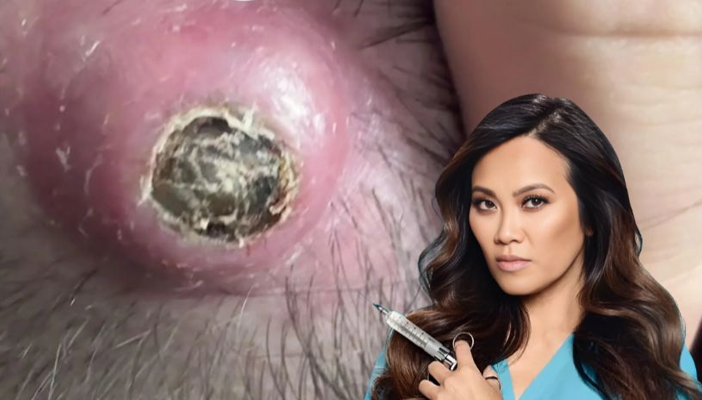What is a Cyst?
A cyst is a benign, encapsulated lesion that consists of a fluid sac which contains liquid, or semi-fluid material. It can vary in shape, size and location. The most common types of cysts are reviewed here.
Acne, acne cysts, and sebaceous cysts are benign skin lesions and are one of the most common reasons which patients consult with dermatologists like Dr. Michele Green in Manhattan. Sebaceous cysts are the most common type of cyst, and are slow-growing noncancerous bumps on the skin. However, if sebaceous cysts are left untreated, they tend to enlarge, get infected, and cause cosmetic scarring. Dr. Michele Green treats these sebaceous cysts in her Upper East Side NYC office each day. Through her minimally invasive techniques, she treats these cysts in a cosmetically elegant way, and avoids any unnecessary scarring.
What causes a sebaceous cyst?
Sebaceous cysts are formed within the sebaceous gland, which is the gland which produces sebum. These cysts develop when the hair follicles become clogged due to a build up of sebum or keratin. These cysts can also be formed from pimples or as a result of trauma to the sebaceous glands. Individuals with a genetic predisposition such as steatocystoma multiplex, Gardner’s syndrome or Basal Cell Nevus Syndrome are also prone to developing sebaceous cysts.
How do you diagnose a sebaceous cyst?
A diagnosis of a sebaceous cyst can be determined by a physical examination of the nodule by a dermatologist, family physician or other healthcare provider. There are occasions when additional testing is required to make a definitive diagnosis of a cyst, since it can sometimes be mistaken for a different type of skin tumor.
Common tests used to diagnosis a sebaceous cyst include:
Cat scan – This test is performed to rule out other abnormalities or cancer.
Ultrasound – This test is performed to establish the contents of the cyst and depth of inflammation.
Punch biopsy – This test is performed to identify the histology of the cyst.
Culture and Sensitivity – This exam is performed to determine the type of bacteria responsible for the infection and the best antibiotic to treat the infection.
